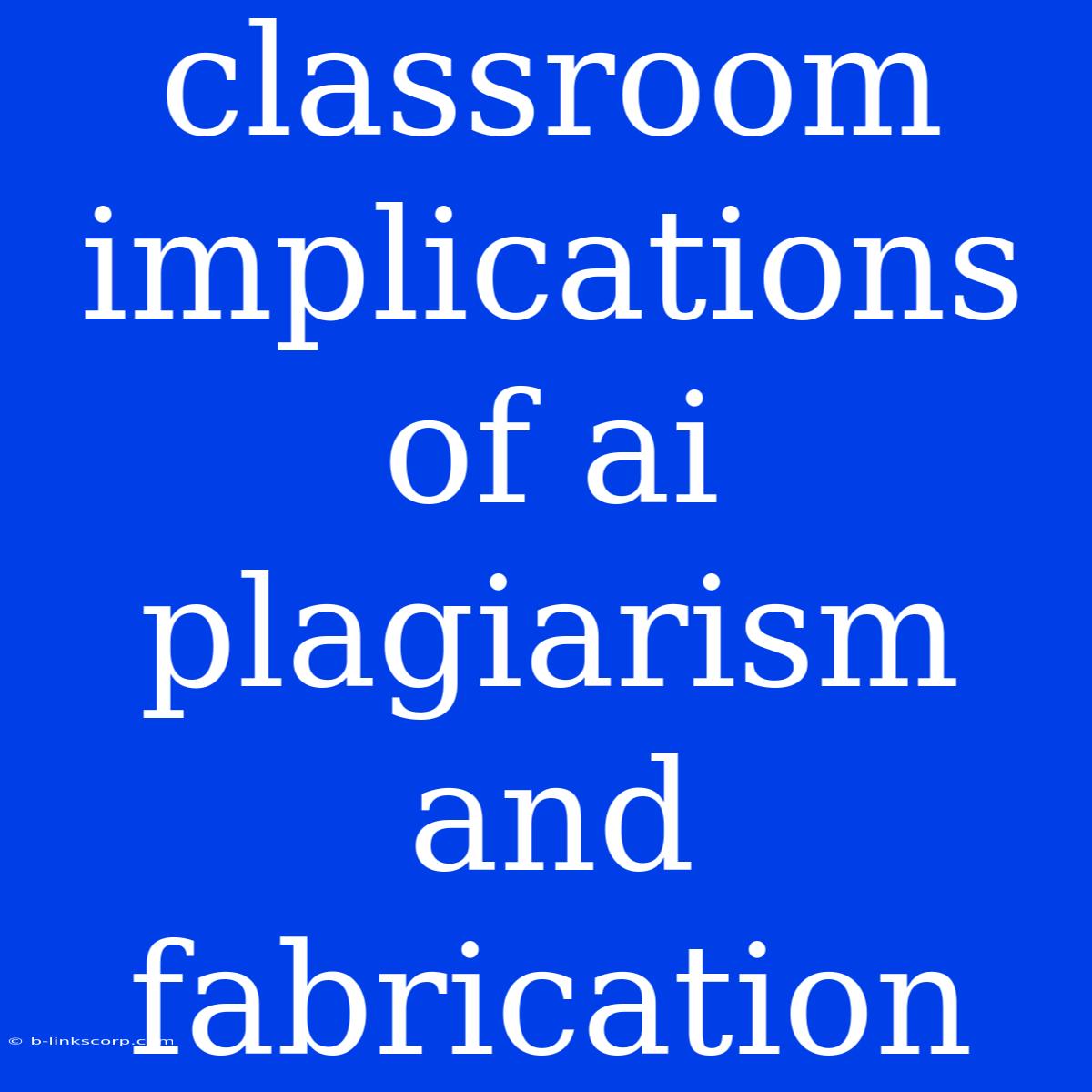The Classroom Implications of AI Plagiarism and Fabrication
The rapid advancement of artificial intelligence (AI) has brought about transformative changes in various fields, including education. While AI can be a powerful tool for learning and teaching, it also presents new challenges, particularly in the realm of plagiarism and fabrication.
AI-Powered Plagiarism: A Growing Concern
AI-powered tools like ChatGPT have become increasingly sophisticated, capable of generating human-quality text, code, and even creative content. This ability has raised serious concerns about academic integrity, as students can now easily use AI to produce plagiarized essays, reports, and even research papers.
Impact on Classroom Environments
The emergence of AI plagiarism has significant implications for classroom environments:
1. Eroding Academic Integrity: AI-powered plagiarism undermines the core values of academic integrity, such as originality, honesty, and intellectual property. Students who rely on AI tools to complete their work are not developing critical thinking, research, and writing skills.
2. Shifting the Learning Landscape: Teachers must adapt their teaching strategies to address the challenges posed by AI. Traditional methods of assessing student work may become less effective, requiring educators to find innovative approaches to evaluate authentic learning.
3. Increased Workload for Educators: Detecting AI-generated content can be challenging, placing a greater burden on teachers to verify the authenticity of student work. Educators need access to tools and training to effectively identify and address AI plagiarism.
4. Ethical Dilemmas: The rise of AI plagiarism raises ethical questions about the role of technology in education. How do we balance the potential benefits of AI with the need to preserve academic integrity? How do we foster a culture of responsible AI use in the classroom?
Addressing AI Plagiarism: A Multifaceted Approach
Addressing AI plagiarism requires a multi-pronged approach:
1. Open and Honest Dialogue: Openly discussing the potential for AI plagiarism with students is crucial. Educators should emphasize the importance of academic integrity and the consequences of using AI to cheat.
2. Building Critical Thinking Skills: Encouraging students to develop critical thinking, research, and problem-solving skills will equip them to engage with information responsibly and avoid reliance on AI for quick fixes.
3. Embracing Authentic Assessments: Shift the focus from traditional assignments to authentic assessments that emphasize critical thinking, creativity, and collaboration.
4. Utilizing Anti-Plagiarism Tools: Explore and implement anti-plagiarism software that can detect AI-generated text. However, it is important to note that these tools are not foolproof and should be used alongside other strategies.
5. Fostering a Culture of Ethical Use: Educators should promote a culture of ethical AI use, encouraging students to utilize AI tools responsibly for learning and research.
Conclusion
AI plagiarism poses a real and present threat to the integrity of education. By understanding the challenges and implementing effective strategies, educators can navigate this new landscape and ensure that technology is used ethically and responsibly to enhance the learning experience for all.

